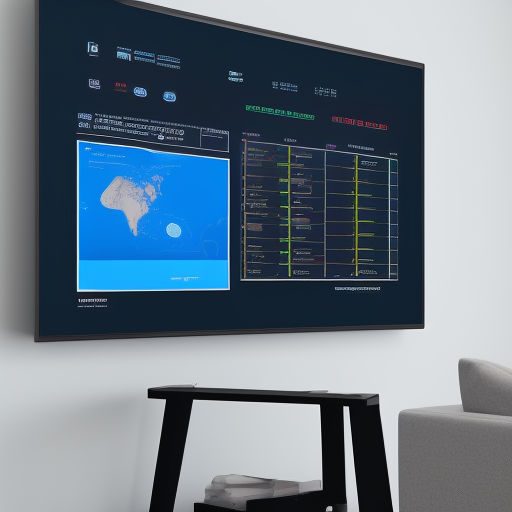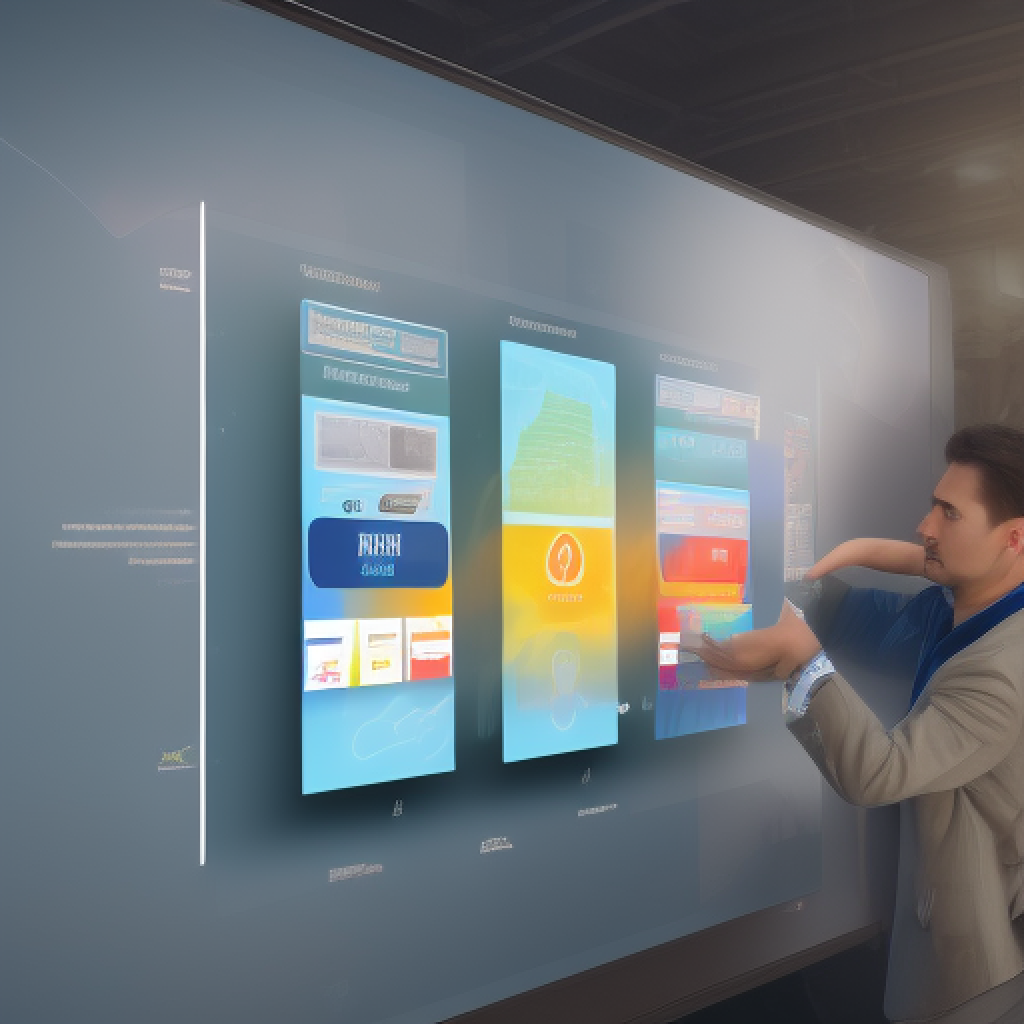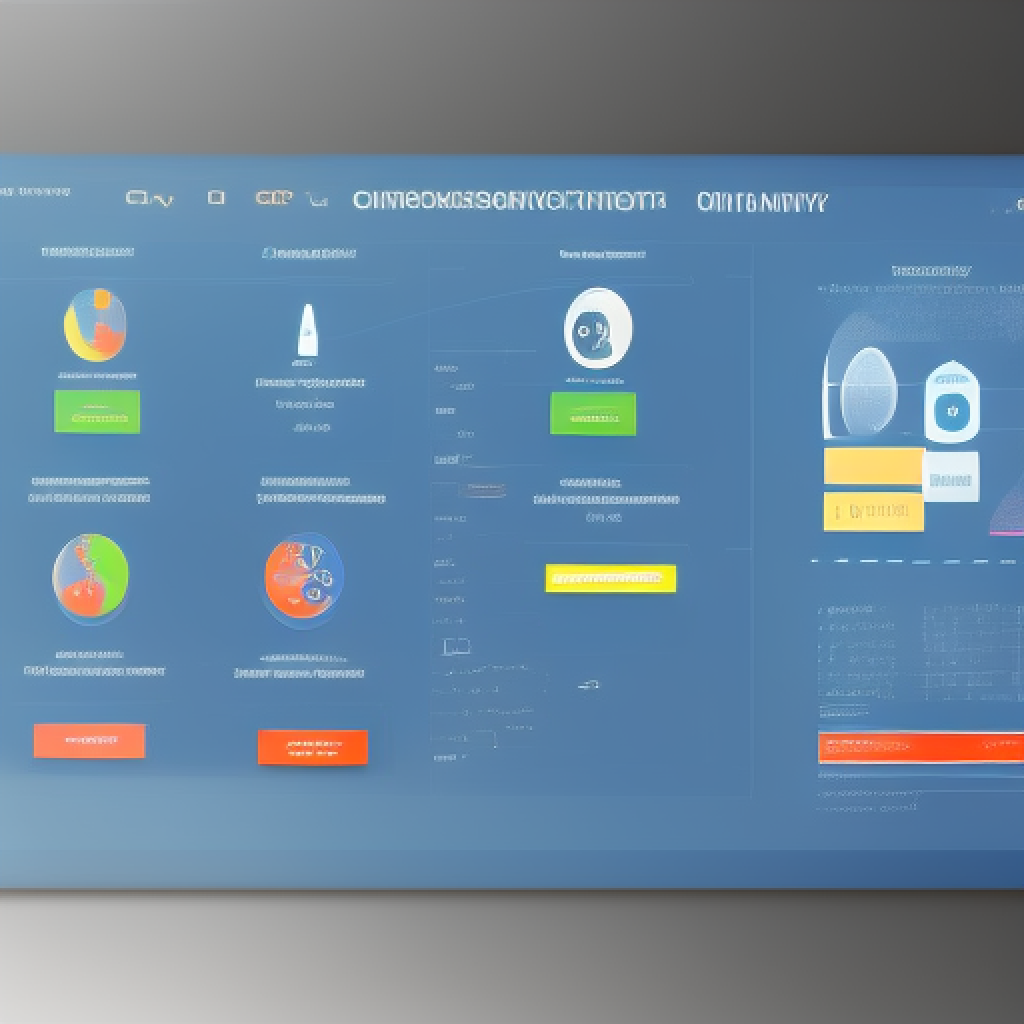The use of interactive touch panels in supply chain management

Interactive touch panels can also be used in supply chain management to improve efficiency and productivity. Here are some examples of how touch panels can be utilized in supply chain management:




Advancements in technology have allowed businesses to streamline their operations, and one such innovation is interactive touch panels that enable real-time tracking of products and materials. With the help of this technology, managers can now track the location and status of inventory at any given time. Real-time tracking has become an essential tool in the world of supply chain management. Businesses can now monitor the movement of their products from the moment they leave the warehouse until they reach the end-user. This allows for better inventory management by providing accurate information about stock levels, which can help reduce the risk of stockouts or overstocking. Furthermore, this technology can be used to track the delivery schedules of products. By monitoring the movement of trucks and delivery vehicles, businesses can anticipate delays and plan accordingly. This ensures that customers receive their orders on time, which can build brand loyalty and increase customer satisfaction. Real-time tracking can also be used to optimize production planning. By monitoring the status of materials and products, managers can adjust production schedules to meet demand. This can reduce wastage and increase efficiency, resulting in cost savings for the business. Interactive touch panels can provide a detailed view of the supply chain, allowing managers to identify bottlenecks and areas for improvement. This can lead to better decision-making, and ultimately, increased profitability. In conclusion, real-time tracking through interactive touch panels is a game-changer in supply chain management. It provides businesses with accurate and timely information about the movement of their products, enabling better inventory management, delivery scheduling, and production planning. As technology continues to evolve, it is evident that this tool will become even more critical in the future.
Touch panels have become an integral part of modern industries. The reason being, they have revolutionized the manufacturing process by providing real-time quality control checks. Touch panels can capture images and data about products and materials, which can be analyzed for defects and inconsistencies. This feature has significantly helped reduce waste and save time and money in the manufacturing process. Quality control is a critical aspect of the manufacturing process, and touch panels have made it possible to enhance quality control checks. These panels are now being used in various industries, including pharmaceuticals, food processing, and electronics. They enable manufacturers to monitor the production line and identify any defects or irregularities in real-time. By doing so, they prevent the faulty products from reaching the market, which can damage the brand’s reputation and lead to significant financial losses. Moreover, touch panels are incredibly accurate and reliable, making them an ideal tool for quality control checks. They can capture images and data about the products and materials, which can be analyzed using software that detects any defects. The software can also identify patterns in the defects, making it possible to identify the root cause of the problem and take corrective action immediately. In addition to real-time quality control checks, touch panels also offer other benefits. They are user-friendly, making them easy to use, even for operators with minimal training. They are also durable and can withstand harsh manufacturing environments, including exposure to dust, water, and extreme temperatures. In conclusion, touch panels have revolutionized the manufacturing process by providing real-time quality control checks. They offer accurate, reliable, and user-friendly features that enable manufacturers to monitor and detect any defects or irregularities in the production line. By doing so, they prevent the faulty products from reaching the market, enhancing the brand’s reputation and saving time and money in the process.
In today’s fast-paced world, businesses are looking for ways to manage workflows more efficiently and streamline their processes. One of the ways they are achieving this is by using touch panels. Touch panels have emerged as a popular tool for managing workflows as they allow for quick and easy access to information, making it easier to track the progress of an order from production to delivery. With touch panels, businesses can monitor the workflow of an order, ensuring that each step of the process is done correctly, and any issues are identified and resolved in a timely manner. For instance, in the manufacturing industry, touch panels can be used to monitor the production process, and once a product is completed, it can be marked as complete, and the next step in the workflow can be initiated. Moreover, touch panels can be used to track inventory, ensuring that the production process is not halted due to a lack of materials. Managers can receive alerts when inventory is running low and order more supplies before it’s too late. This ensures that the workflow is not disrupted, and production can continue as planned. In addition to managing workflows, touch panels can also be used to monitor employees’ productivity. This is particularly useful for businesses in the service industry, such as restaurants or hotels, where employees are constantly on the move. Managers can use touch panels to monitor their employees’ progress, ensuring that they are performing their duties efficiently and effectively. In conclusion, touch panels have proven to be an essential tool for workflow management, ensuring that businesses can streamline their processes and achieve greater efficiency. They have become an indispensable part of many industries, from manufacturing to service, and are likely to become even more prevalent in the future. With their ability to provide quick and easy access to information, touch panels are a valuable asset for any business looking to improve their workflow management.
The use of touch panels for collaboration has become increasingly popular in the modern business world. With remote work and global supply chains becoming the norm, touch panels provide a simple and effective way to facilitate communication between teams, suppliers, and customers. One of the most significant benefits of using touch panels for collaboration is the ability to share information quickly and efficiently. With the touch of a finger, team members can access relevant information about product specifications, delivery schedules, and other critical details. This helps to reduce errors and miscommunications, ultimately leading to more successful collaborations. Another advantage of touch panels is that they promote a more interactive and engaging collaboration experience. Instead of relying on traditional communication methods like email or phone calls, touch panels allow team members to interact with information in a more tangible way. This makes it easier to brainstorm ideas, solve problems, and come up with creative solutions. Touch panels are also highly versatile and can be used in a variety of settings. They can be installed in conference rooms, training rooms, and other collaborative spaces, or they can be used to create virtual meeting spaces for remote teams. Additionally, touch panels can be integrated with other collaboration tools like video conferencing software and document sharing platforms, making it easier to work together across distances. Overall, the use of touch panels for collaboration is a highly effective way to improve communication and productivity in modern business settings. By providing an interactive and engaging collaboration experience, touch panels help teams work more effectively together and achieve better results. As technology continues to evolve, touch panels are likely to become an even more essential tool for collaboration in the years to come.
Overall, the use of interactive touch panels in supply chain management can improve efficiency, productivity, and collaboration, leading to cost savings and improved customer satisfaction.







